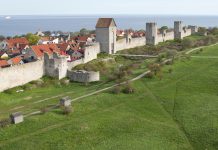
For years Tanzania’s parks and game reserves especially in the Southern circuit – Ruaha, Selous, and Mikumi – have suffered habitual neglect and attacks of poachers. However, there is hope for change. With the Presidential and General elections set for October, this part of the nation has suddenly enjoyed attention from the vibrant pre-election activism going on.
Under President Jakaya Kikwete’s leadership and successive regimes, thousands of elephants were killed carelessly due to poaching. It was actually surprising that despite the crimes being revealed by international conservation organizations, the government’s response on the matter was outright denial.
While the conservationists tried as much as they could to inform the general public about what was going on, they were constantly purported to be distributing propaganda, with hidden selfish objectives.
It is not only the conservationists that suffered the wrath of the mischievously unprincipled poaching moguls, but also tourism ministers who dared bring to book ivory trade kingpins. For instance, while attempting to weed out ivory trade kingpins, Khamis Kagesheki was in for a rude shock when he was framed up by deceitful “leaders” in the campaign and jolted out of government.
In the recent past however, laser focus has shifted to the area. According to the Ministry of Tourism and Natural Resources’ Deputy Minister, Mahmoud Mgimwa, Tanzania is planning to source a US$100 million World Bank loan, to service adequate tourism marketing of not only the Northern circuit parks and reserves that include Lake Manyara, Tarangire, Serengeti, and Ngorongoro, but the whole country’s tourist attractions.
However, the plan has been termed ridiculous by skeptics who insist that such funding can only be availed if there was hard evidence that poaching, and wildlife environmental degradation was being seriously handled.
Currently, the Tanzania Tourism Board has rolled out new marketing strategies targeting the key European and North American markets. This is to combat the Ebola crisis effect that hit East Africa. The situation was worsened by the falling apart of Tanzania and Kenya over access to Jomo Kenyatta International Airport in Nairobi, Kenya – affecting tourist arrivals in the area.
Tanzanians hope that a new government may improve the state of tourism in the nation. This is due to the constant light that has been shed on the matter in the pre-election campaigns. It is anticipated that a new government will learn from the mistakes of the previous regimes’ strategies, and implement sound methods to deter poaching while efficiently conserving wildlife and the environment.
The World Heritage Site Program under UNESCO has endeavored to ensure that heritage sites in the world are conserved for the benefit of future generations. It has undisputedly remained a fact that despite the numerous losses in elephant herds, parks and game reserves in Tanzania continue to provide visitors with sufficient insight of how Africa’s vast wilderness heritage sites once looked like.
An example is the Selous Game Reserve. Being close to Dar es Salaam and host to some of Tanzania’s finest camps and lodges, it is a must-visit site especially for business and conference visitors.










